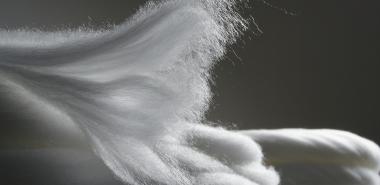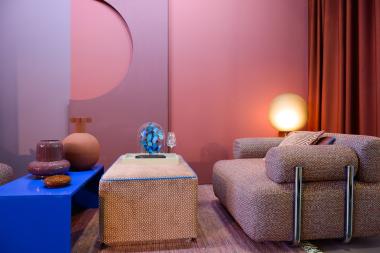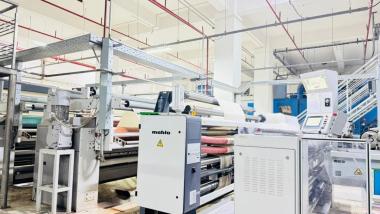Techtextil India 2025 & Dornbirn Global Fiber Conference Asia
In line with India’s growing momentum to establish itself as a global textile manufacturing powerhouse, Techtextil India 2025, the country’s foremost B2B exhibition on technical textiles, nonwovens and composites, is set to return with an expansive and future-ready edition. Scheduled from November 19 to 21, 2025, at the Bombay Exhibition Centre, Goregaon, Mumbai, the 10th edition will feature over 215 exhibitors, including more than 100 first-time participants.
According to the Ministry of Textiles, India’s technical textiles exports stood at USD 2.92 billion in FY 2024–25, underscoring the sector/s growing global footprint. Packtech at 37.5% and Indutech at 28% emerged as the leading export categories, reflecting strong demand across industrial and packaging applications. With exports to the UK valued at USD 136 million, accounting for a 4.7% share, the data highlights India’s strengthening position in global value chains – setting the stage for platforms like Techtextil India that drive innovation, business and exchange of scientific knowledge for this high-growth segment. The expo will house 500+ products and 300+ brands with international participation from Belgium, Germany, Hong Kong, Italy, Japan, Sweden and the USA.
The integration of advanced manufacturing technologies, sustainability practices, focus on circularity and innovative fibers has become a necessity. Techtextil India 2025 plays a crucial role in driving this evolution by bringing together stakeholders across the value chain, fostering dialogue on policy and technology and accelerating industry-wide transformation. This year, the show takes a significant leap forward with its multi-functional approach, integrating new features under one roof — the Dornbirn Global Fiber Conference Asia, which will be held on 18th November 2025, the launch of Sporttech Pavilion, the feature of German Pavilion and a Techtextil India conference powered by Indian Technical Textile Association (ITTA). Together, these additions will enable participants to explore advanced applications of technical textiles across various sectors, including sports, automotive, defence, healthcare, construction, and sustainability.
India’s textile industry is undergoing a transformative shift driven by government reforms and industry-led innovation. Acknowledging the sector’s pivotal role in the national economy, the Ministry of Textiles has recently introduced significant amendments to the Production Linked Incentive (PLI) Scheme for Textiles, with a focus on revitalising the man-made fiber (MMF) and technical textiles segments. The revision aims to enhance ease of doing business, attract new investments and generate employment, while aligning with the government’s broader vision of ‘Make in India’ and ‘Atmanirbhar Bharat’.
These progressive measures underline the government’s commitment to fostering innovation, investment and employment generation within the sector — setting the stage for India to emerge as a global leader in high-performance textile manufacturing.
Commenting on the upcoming edition, Mr Raj Manek, Executive Director and Board Member, Messe Frankfurt Asia Holdings Ltd, stated: “The Indian textile industry is witnessing a remarkable transformation driven by government support, technological innovation and global demand for sustainable materials. Techtextil India 2025 will not only showcase the latest in technical textiles and nonwovens but also serve as a knowledge-driven hub connecting policy with practice. Our new initiatives – the Dornbirn Global Fiber Conference Asia, Sporttech Pavilion, German Pavilion and ITTA Technical Textiles Seminar – align perfectly with the nation’s textile growth mission, enabling participants to explore next-generation materials, solutions and business collaborations. We are proud to support India’s vision of becoming a global textile powerhouse.”
The Dornbirn Global Fiber Conference Asia, which is known for its focus on research-driven fiber innovation, will make its India debut, just a day before the expo on 18th November 2025, at Bombay Exhibition Centre, Mumbai, marking a perfect prelude for Techtextil India 2025. On 19th November 2025, the Techtextil Symposium will feature various knowledge sessions under themes like ‘Smart Solutions for Key Segments of Technical Textiles,’ organised by the Indian Technical Textile Association (ITTA). Focusing on innovations and practical applications in geotextiles, agrotextiles and industrial textiles, this will provide a platform to interact with leading experts. On Day 3, the conference organised by the Society of Plastics Engineers (SPE) India will explore ‘Creating Tomorrow’s Circular Supply Chains: Technology, Collaboration & Capital for Tech Textiles and Plastics.’
The show will present credible developments in the fabrics for sports and activewear (Sporttech) category, leading to a dedicated Sporttech Pavilion organised in partnership with Concept N Strategies. A dedicated conference titled – ‘India’s activewear revolution scaling without compromise: Building a 360-degree ecosystem for premium, high-quality active wear that competes globally’ will spotlight high-performance fabrics and materials revolutionising sportswear and outdoor applications. The show will also house a conference on recycling, ‘Creating tomorrow’s circular supply chains: Technology, collaboration and capital for textiles and plastics.'
Besides these key features, the expo has seen an expansion into Mobiltech, Buildtech and Oekotech segments. Through these categories, the exhibition aims to connect manufacturers, technology providers, investors and policymakers under one unified platform to share insights, explore business opportunities and discuss the future of advanced textile materials. The event’s focus on innovation, sustainability and collaboration complements the national agenda of achieving self-reliance and global competitiveness in textiles.
The show will have the presence of key domestic industry leaders, including Aditya Birla Yarns, Khosla Profil, Park Nonwoven, Pidilite, Reliance, Welspun, Sanathan Textiles, Sarex Chemicals, and Suntech Geo. Meanwhile, the international exhibitors include ACM, Inc., Autefa Solution Germany GmbH, Bettarini & Serafini SRL, Brückner Textile Technologies GmbH & Co. KG, Georg Sahm GmbH & Co. KG, Innovatec Microfiber Technology GmbH & Co. KG, Procotex, Pulcra Chemicals GmbH, R&M International Sales Corporation, Reifenhäuser Enka Tecnica GmbH, Ring Maschinenbau GmbH, STC Spinnzwirn GmbH, Textechno Herbert Stein, VEIT Hong Kong Limited and Zoltek.
As high-value, sustainable and globally competitive textile production is receiving renewed focus, the synergy between government initiatives and industry platforms such as Techtextil India 2025 will continue to strengthen India’s leadership in the global textile landscape. The show has become synonymous with India’s textile ambition — weaving together innovation, collaboration and opportunity to create a more resilient, future-ready industry.
The expo has garnered support from key industry bodies, including the Manmade & Technical Textiles Export Promotion Council (MATEXIL), Indian Technical Textile Association (ITTA), Department of Textiles (Government of Maharashtra), while the Dornbirn Global Fiber Conference has garnered support from the Government of Tamil Nadu as the Partner State.
Dornbirn Global Fiber Conference Asia Techtextil India Mumbai Bombay Exhibition Centre
Messe Frankfurt



























